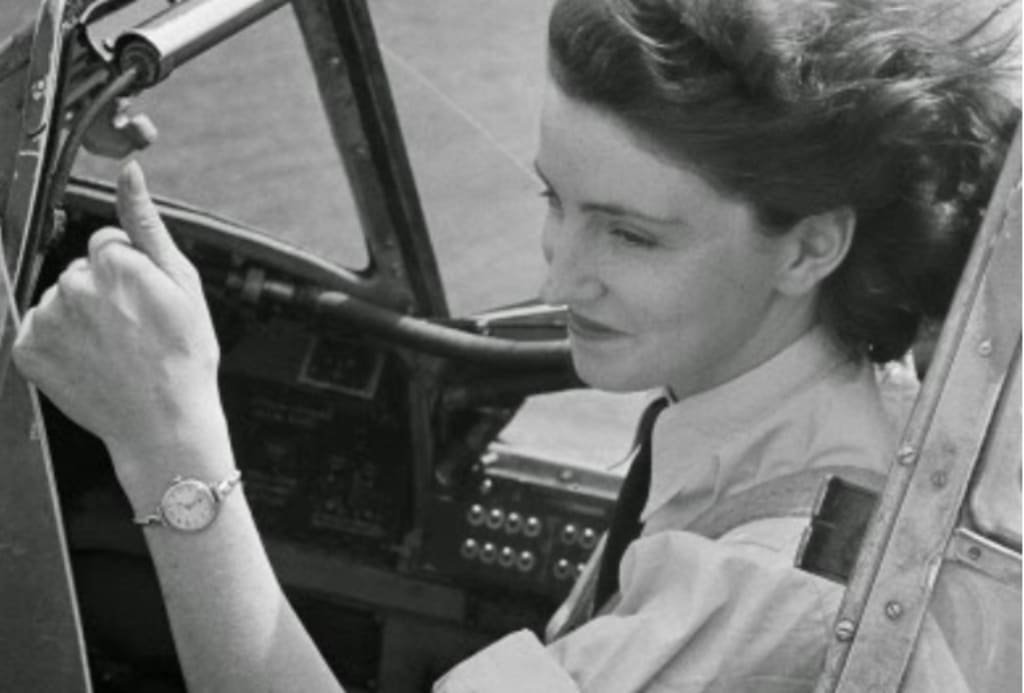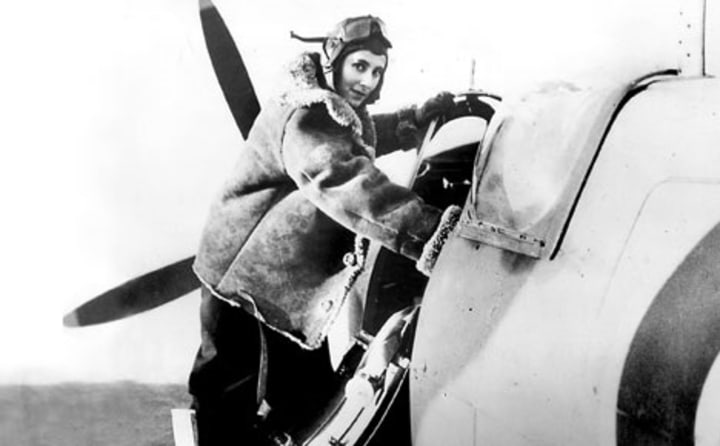Reach for the sky
An unexpected arrival at a WWII airfield causes a stir among the ground crew

Swooping low over the runway, the Spitfire throttled back to a roar of highly-tuned Merlin engine, making a perfect landing on the grass strip at Kenley. Flight Sergeant McKinley nodded his approval as the pilot taxied neatly into position by the fuel bowser.
The pilot leapt down from the cockpit as two men from the refuelling crew climbed up onto the wings. Both nearly lost their footing as they watched the shapely figure lift off the flight helmet and shake out her auburn locks.
“What the…” said McKinley, for once rendered speechless.
“Don’t worry, Flight,” said ATA pilot Eleanor Crossley. “I’m just the delivery girl.”
McKinley stood there, his jaw only a fraction off his chest.
Later that afternoon the scramble was called, a squadron of Messerschmitts heading directly for the airfield, having approached close to the ground to avoid radar contact. A dozen young men sprinted for their aircraft, leaving the newly-arrived Spitfire against its chocks. McKinley and Crossley exchanged a rapid look, before the pilot leapt up, heading for the remaining aircraft.
“You can’t!” shouted McKinley to the departing figure.
If Eleanor heard him, he would never know. ATA pilot Eleanor Crossley accounted for no less than two Luftwaffe aircraft in combat above the airfield, before being posted missing.
~ ~ ~ ~ ~
Historical note
Eleanor Crossley is a fictitious character, combining the names of two serving Air Transport Auxiliary (ATA) pilots of the Second World War.
Eleanor Wadsworth, née Fish, (1917 - 2020) was an English second WWII pilot, the oldest surviving pilot of the ATA before her death in December 2020.
Winifred Crossley, née Harrisson (1906 - 1984) was the first woman to be checked out on a Hurricane fighter, and one of the First Eight, the initial group of women pilots to join the ATA.
The Air Transport Auxiliary was a British civilian organisation set up at the start of the Second World War, which ferried new, repaired and damaged military aircraft between factories, assembly plants, transatlantic delivery points, maintenance units, scrap yards, and active service squadrons and airfields. Women pilots in the ATA were paid the same wages as men, unlike their American counterparts who were paid around 65% of the male pilot wage.

ATA pilots were non-combatant but, after some deliberation, were allowed to have weapons armed for their own defence.
The above story, however, is a work of fiction and no such incident took place as far as the author is aware.
The title image at the top shows Argentinian volunteer ATA pilot Maureen Dunlop, who served from 1942-1945 and was featured on the cover of Picture Post Magazine in 1942.
The ATA recruited pilots unsuitable for either the Royal Air Force or the Fleet Air Arm because of their age, their level of fitness or because they were women. In the ATA, physical disabilities were ignored if the pilot could do the job, such that there were several amputee and other disabled recruits, sometimes referred in jest as "Ancient and Tattered Airmen" (ATA).
The ATA also took pilots from other countries, neutral and combatant. People from 28 countries flew with the ATA. The ATA allowed women pilots to ferry aircraft. The first eight women pilots were accepted into service on 1 January 1940, initially cleared to fly only de Havilland Tiger Moth biplanes from their base in Hatfield. They were: Joan Hughes, Margaret Cunnison, Mona Friedlander, Rosemary Rees, Marion Wilberforce, Margaret Fairweather, Gabrielle Patterson, and Winifred Crossley Fair (source: Wikipedia).
There was a total of 166 women pilots during the war, one in eight of all ATA pilots, volunteering from Britain, Canada, Australia, New Zealand, South Africa, the United States, the Netherlands and Poland. Annette Elizabeth Mahon was the only Irish woman to serve in the ATA. Maureen Dunlop from Argentina (top photo), Margot Duhalde of Chile and Vera Strodl Dowling from Denmark.
Fifteen women ATA pilots lost their lives in service, including the British pioneer Amy Johnson, along with Margaret Fairweather, Joy Davison, Jane Winstone and Susan Slade. I have written another ATA story featuring Amy Johnson and will post that here at some point.
A notable American member of the ATA was Jacqueline Cochran, who returned to the United States and started a similar all female organization known as the Women Airforce Service Pilots (WASP).
About the Creator
Raymond G. Taylor
Author based in Kent, England. A writer of fictional short stories in a wide range of genres, he has been a non-fiction writer since the 1980s. Non-fiction subjects include art, history, technology, business, law, and the human condition.






Comments (6)
This is lovely ❤️
Love the weaving of history into fiction with this one. I bet you could write a novel set around this central idea of women stepping up in wartime. Nice!
support me kindly
read my fiction stories if you love fiction
https://vocal.media/fiction/the-enchanted-waltz
Wow!!